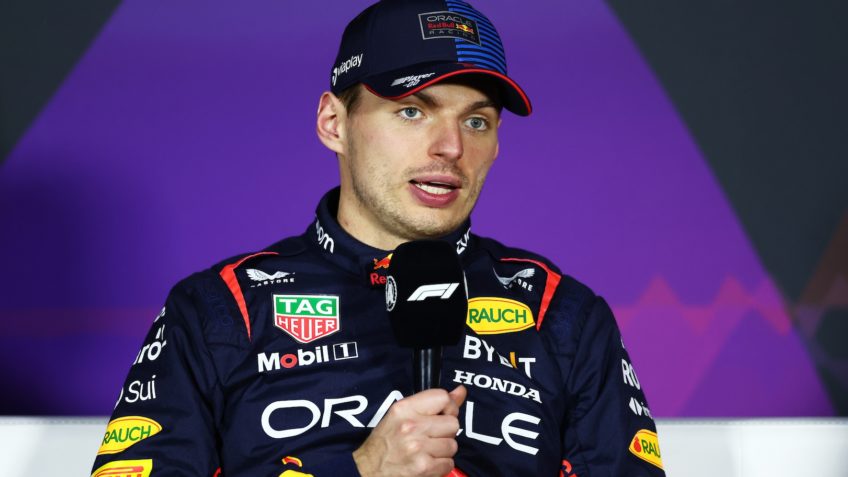
Verstappen’s superiority forces the category to plant news about the future in an effort to keep the audience engaged, writes Mario Andrada
A Formula 1 He returns to racing “at home”, in Europe, and arrives in Ímola, for the 7th stage of the world championship, with a collection of factoids. The objective is to stir up the media and social networks and, in doing so, alleviate the monotony of a championship largely dominated by the three-time reigning world champion (2021, 2022 and 2023), Max Verstappen.
Ferrari (in Australia) and McLaren (in Miami) they even achieved a victory each this year and arrive at the Enzo and Dino Ferrari circuit at the weekend, with promises of taking Red Bull and Verstappen out of their “comfort zone”as defined by Frederic Vasseur, the Frenchman who runs Ferrari in F1.
Everyone knows, however, that Verstappen has what he needs to secure a fourth this year. They also know that the Dutchman is already favorite for fifth place in 2025.
Chances of an unpredictable world championship, only in 2026, with the entry into force of the category’s new engine regulations and with the arrival of Audi, with its own team, and Honda and Ford with new engines. Not to mention Andretti, who is still struggling to be accepted into the world championship.
The new F1 engines will be more efficient, cheaper, more powerful and more difficult to manage. They were designed to use three times as much electricity as current units, in addition to being powered by sustainable fuel, even produced through recycling waste, which will be the subject of another article in the future.
F1 has always relied on major changes to the regulations to restore balance to racing. Every time a team or driver established unquestionable dominance on the tracks, as is the case now, F1’s top brass messed with the regulations trying to shuffle the cards in the racing game.
This time, however, a request from the automakers that provide engines and money for the teams forced the FIA, the entity that governs motorsport, to announce the regulation almost 5 years before it came into force. As a result, F1 found itself chained and forced to live with the superiority of Red Bull and Verstappen for 4 seasons, of which the Dutchman has already won 3 titles.
Movements in the driver and team market are often very useful in this effort. As soon as a new hire is announced, as was the case with Lewis Hamilton by Ferrari from 2025, the public and the media begin to operate with an eye on the future. Nobody talks anymore about when Mercedes will win again. The preference is to spend time and space in the press to speculate what life will be like for the multi-time British champion in Maranello, Italy.
EXCHANGE-EXCHANGE 🛞
There are still 11 places available for drivers in the 2025 World Championship. Only Ferrari (Hamilton and Charles Leclerc) e McLaren (Lando Norris e Oscar Piastri) have their driver pairings confirmed for next year.
Red Bull (Verstappen), Mercedes (George Russell), Aston Martin (Fernando Alonso), Williams (Alexander Albon) e Clean (Nico Hulkenberg) have an open position. Alpine, Racing Bulls and Haas have two.
Among the drivers without a contract for next season are race winners such as Carlos Sainz, Pierre Gasly, Esteban Ocon e Daniel Ricciardo. Sainz, by the way, is the best driver among those available. AND Lance Strollthe least concerned about the future since his father, Lawrence, owns Aston Martin and is unlikely to leave his son alone.
The dynamics of the pilot market are very similar to a game of musical chairs. The competitors walk around the chairs, when the music stops everyone sitting down and whoever doesn’t find a chair is eliminated.
Teams and drivers are looking for the same thing: a seat to accommodate the best possible setup. So, the market moves from top to bottom. Only as the best drivers are hired and the best teams fill their team will spaces open up for lower-ranking personnel.
At this moment, the 2nd place at Mercedes and Red Bull are blocking the market on the teams’ side, while Sainz’s choice blocks the market on the drivers’ side. Not to mention the possibility of Verstappen leaving Red Bull, the biggest factoid of the year.
ENGINES ARE THE HELL OF THE TIME
One detail that needs to be clear to anyone willing to speculate, or even bet, on market movements is that the information released by the media and social networks usually represents less than 10% of what actually happens behind the scenes.
It is because of this general misinformation that F1 and team managers often manipulate public attention. When the audience starts to drop, an official announcement soon appears about a bombastic signing to stir up the crowd.
And when the market is at a standstill or without vacancies, F1 leaks speculative news about the future of the regulations. The focus is on the engines, and for a highly passionate reason.
Even before the new engine regulations come into force (something that will only happen in 2026), the Autosporta British magazine considered the bible by fanatics and experts, published this week the news that the FIA is already planning to change F1’s engines in 2030. It would be a return to the past in search of the traditional V-8 engines dominant in the 1950s, 1960s and until 1970.
The reason? Noise. Those who make a living from F1, whether they support it or work, consider that the current hybrid engines are too quiet. The so-called “petrol heads”, petrolheads, are used to associating power with the noise of engines. They prefer to sacrifice technology and the environment to get back the roar of classic engines, and with them the small foam cylinders used to advertise and protect their ears. Sleep with noise like that.
INFORMATIONAL BONUS
Here are some of the main F1 drivers without a contract for 2025:
Here are the drivers from other categories considered for F1:
In addition to these, there are still a few dozen young talents looking for their place in the sun inside or outside the “academies” set up by the big teams to search for future champions.
Source: https://www.poder360.com.br/opiniao/f-1-com-f-de-factoide/

